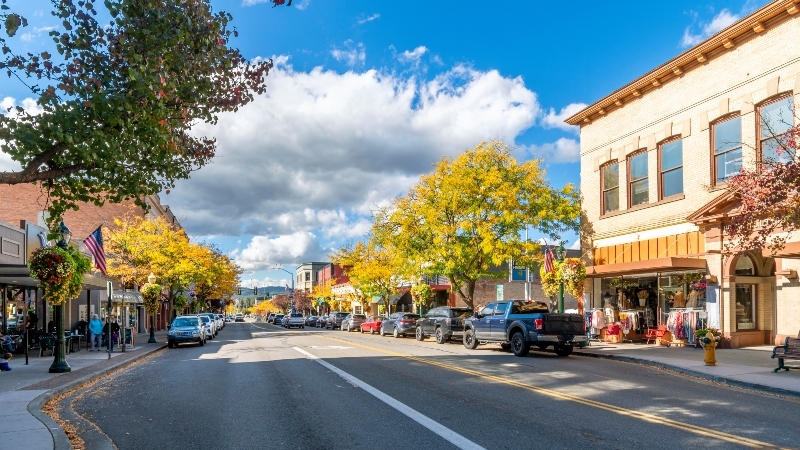Making the Switch: Vendor Transition Guide
Switching fire and security vendors feels risky. Even if your current provider isn't meeting your needs, the thought of transitioning systems and...
 |
Fire protection professionals committed to safeguarding lives, property, and peace of mind. |
 |
Solutions designed for your property type, from multi-family housing to healthcare facilities to retail spaces. |

|
Fire alarm, area of refuge, camera, and card access monitoring services. |
 |
Clear communication and instant response when every second counts. |
 |
From kitchens to server rooms, the right protection for every space. |
 |
Keep your primary defense system ready and reliable. |

|
Manage all your properties' access from one simple platform. |
 |
Monitor multiple properties in real time from anywhere, at any time. |

|
Document upcoming maintenance appointments and improve your proactive budget planning. |
 |
Fire Extinguisher Maintenance Checklist Learn the requirements for testing extinguishers monthly, annually, and beyond. |

|
Track all your inspection deadlines in one place. |
 |
Kitchen Hood Inspection Checklist Ensure your kitchen hoods are safe and compliant. Download a complete list of testing requirements. |

|
Guide to Fire & Security Monitoring Your complete property protection handbook in practical terms. |

|
Running a food truck takes work—this guide gives you the tools to keep it safe and up to code. |
 |
Comprehensive Guide to NFPA 13 and NFPA 25 Fire Sprinkler Systems Navigate sprinkler system requirements with confidence using our straightforward guide to codes and maintenance. |

|
Get your essential compliance guide. |
 |
When reliability matters across 18 restaurants, micromanagement doesn't. |
4 min read
Stephen Cieslukowski, President : November 01, 2019
The days of finding security behind closed doors with brass keys in tumbler locks are long gone. All doors—front doors, back doors, garage doors, office doors, school doors, church doors, store doors, clinic doors, apartment doors—have become the critical first line of defense to keep everyone and everything behind them safe from harm.
To ensure safety, there’s a lot to consider—and I mean a lot!—when evaluating your door security needs, policies and options. So, let’s get started by looking at three industries where door access is especially crucial.
Door access enables you to keep track of who’s coming and going, where and when.
Ensuring parent check-in and front door security is serious business. You want to be sure the designated parent is checking in, and only authorized people enter, such as vendors. Access to interior areas, like kitchens, utility rooms and administrative offices, need to be limited. Even door access to playgrounds should be considered. On the flip side of the access spectrum, exit restrictions need to keep children inside.
Patients and residents in independent living, assisted living, memory care, and long-term care all have different access needs so careful planning is essential. Credentials are needed for employees and volunteers who work in various areas of the facility, and have access to medical cabinets, confidential patient information, offices and lockers.
From mailboxes and garage access to moving in/out, considerations also include guests, package and food delivery, garbage removal and access to amenities like pools and gyms. How will door access be compromised if a card is lost or stolen? What happens when someone is locked out?
Card control systems are the most common door access security tool and they are highly effective. You probably use at least one of these:
As you evaluate your business’s door access needs, both present and future, here are questions and considerations.
I know that’s a lot of questions and considerations to take in, but Brothers Fire & Security will help you sort through them. We’ll take the time to sit down with you to evaluate your security requirements, options and budget then develop a system specific to your business.
Don’t let trouble and harm through your doors—make sure that your first line of defense is effective and reliable.
As one of the premier providers of fire and security solutions in the Upper Midwest, Brothers Fire & Security strives to build long-term, value-added relationships. We work with business owners and property management companies, as well as all types of public institutions to solve fire and security needs. By taking advantage of our integrated bundled services, many of our clients find that they can save 25-30% on their safety services, annual inspections and more. From a single location to franchises throughout the region and the country, our integrated approach saves our clients valuable time, money and stress. We provide fire protection systems, security systems, fire sprinkler systems, fire alarm systems, 24-7 monitoring, fire extinguishers, card access and kitchen hoods.

Switching fire and security vendors feels risky. Even if your current provider isn't meeting your needs, the thought of transitioning systems and...

Your fire alarm shows a trouble signal. Last week's sprinkler inspection never happened, and despite three calls and multiple messages, your vendor...

Winter weather and holiday demands can make managing multi-location security a nightmare. Fall is your best window to upgrade security systems,...